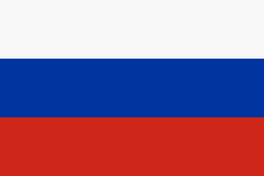Donate to Support Supercluster
Your support makes the Astronaut Database and Launch Tracker possible, and keeps all Supercluster content free.
SUPPORTSupercluster on Patreon
Your support makes the Astronaut Database and Launch Tracker possible, and keeps all Supercluster content free.
SUPPORT

















This goes
to space
Crew-8 Endeavor
NASA astronauts Matthew Dominick, Michael Barratt, and Jeanette Epps, and Roscosmos cosmonaut Alexander Grebenkin will lift off from Launch Complex 39A at NASA’s Kennedy Space Center in Florida to perform research, technology demonstrations, and maintenance activities aboard the microgravity laboratory.
Dragon Technical Specs
Height: 8.1 m / 26.7 ft
Diameter: 4 m / 13 ft
Capsule Volume: 9.3 m / 328 ft
Trunk Volume: 37 m / 1300 ft
Launch Payload Mass: 6,000 kg / 13,228 lbs
Return Payload Mass: 3,000 kg / 6,614 lbs
Dragon Stats
Total launches: 44
Visits to the ISS: 39
Total reflights: 23
Matthew Dominick will serve as commander for Crew-8, his first spaceflight, after being selected as an astronaut by NASA in 2017. He is from Wheat Ridge, Colorado, and earned a bachelor’s degree in electrical engineering from the University of San Diego, California, and a master’s in systems engineering from the Naval Postgraduate School in Monterey, California. He is an active-duty U.S. Navy astronaut. He graduated from the U.S. Naval Test Pilot School in Patuxent River, Maryland, and then served as a test pilot specializing in testing aircraft carriers’ landings and catapult launches.
Michael Barratt is the Crew-8 pilot, making his third visit to the space station. In 2009, Barratt served as a flight engineer for Expeditions 19/20 as the station transitioned its standard crew complement from three to six and performed two spacewalks. He flew aboard the space shuttle Discovery in 2011 on STS-133, which delivered the Permanent Multipurpose Module and fourth Express Logistics Carrier. He has spent a total of 212 days in space. Born in Vancouver, Washington, he considers Camas, Washington, to be his hometown. Barratt earned a bachelor’s in zoology from the University of Washington, Seattle, and a Doctor of Medicine degree from Northwestern University in Chicago. He completed residencies in internal and aerospace medicine at Northwestern along with a master’s degree at Wright State University in Dayton, Ohio. After nine years as a NASA flight surgeon and project physician, Barratt joined the astronaut corps in 2000. During Expedition 70/71 on the International Space Station, he will serve as a mission specialist.
Jeanette Epps was selected by NASA as an astronaut in 2009 and is a mission specialist aboard Crew-8, her first spaceflight, working with the commander and pilot to monitor the spacecraft during the dynamic launch and re-entry phases of flight. She is from Syracuse, New York, and earned a bachelor’s in physics from LeMoyne College in Syracuse, and a master’s in science and a doctorate in aerospace engineering from the University of Maryland at College Park. Prior to joining NASA, she worked at Ford Motor Co. and the Central Intelligence Agency. She was selected as an astronaut in July 2009 and has served on the Generic Joint Operation Panel working on space station crew efficiency, as a crew support astronaut for two expeditions, and as lead capsule communicator at NASA Johnson. Epps previously was assigned to NASA’s Boeing Starliner-1 mission. NASA reassigned Epps to allow Boeing time to complete the development of Starliner while also continuing plans for astronauts to gain spaceflight experience for future mission needs.
Roscosmos cosmonaut Alexander Grebenkin, who graduated from Irkutsk High Military Aviation School, Irkutsk, Russia, majoring in engineering, maintenance, and repair of aircraft radio navigation systems, also is flying on his first mission. He graduated from Moscow Technical University of Communications and Informatics with a degree in radio communications, broadcasting, and television. Grebenkin will serve as a flight engineer during Expeditions 70/71 aboard the International Space Station.
Once in orbit, the crew and SpaceX mission control in Hawthorne, California, will monitor a series of automatic maneuvers that will guide Dragon to the forward-facing port of the station’s Harmony module. The spacecraft is designed to dock autonomously, but the crew can take control and pilot manually, if necessary.
After docking, Crew-8 will be welcomed inside the station by the seven-member crew of Expedition 70 and conduct several days of handover activities with the departing astronauts of NASA’s SpaceX Crew-7 mission. After a handover period, NASA astronaut Jasmin Moghbeli, ESA (European Space Agency) astronaut Andy Mogensen, JAXA (Japan Aerospace Exploration Agency) astronaut Satoshi Furukawa, and Roscosmos cosmonaut Konstantin Borisov of Crew-7 will undock from the space station and splash down off the coast of Florida.
Crew-8 will conduct new scientific research to prepare for human exploration beyond low Earth orbit and benefit humanity on Earth. Experiments include using stem cells to create organoid models to study degenerative diseases, studying the effects of microgravity and UV radiation on plants at a cellular level, and testing whether wearing pressure cuffs on the legs could prevent fluid shifts and reduce health problems in astronauts. These are just a few of the more than 200 scientific experiments and technology demonstrations taking place during their mission.
While aboard the orbiting laboratory, Crew-8 will see the arrival of both the SpaceX Dragon and the Roscosmos Progress cargo spacecraft. Crew-8 also is expected to welcome the agency’s Boeing Crew Flight Test astronauts and the first cargo flight of Sierra Space’s Dream Chaser. A Soyuz spacecraft with three new crew members, including NASA astronaut Tracy Dyson, will also launch during their stay, and the Soyuz carrying NASA astronaut Loral O’Hara will return to Earth.
After completing a short handover with Crew-9 after the mission, Dragon with the four crew members aboard will autonomously undock, depart the space station, and re-enter Earth’s atmosphere. After splashdown off Florida’s coast, a SpaceX recovery vessel will pick up the spacecraft and crew, who then will be helicoptered back to shore.
Caption courtesy of NASA.
Dragon for Crew
This SpaceX capsule is designed to carry a crew of four to the International Space Station or other Earth orbit destinations after being launched atop a reusable Falcon 9 rocket.
The capsule includes a launch abort system, advanced environmental control and life support systems to keep the crew safe during flight, and state-of-the-art touchscreen interfaces.
Crew Dragon is designed to operate autonomously but can be manually controlled by SpaceX teams in Hawthorne, California, and the astronauts on board.
In addition to crew rotation missions to the ISS, Crew Dragon is also available for private missions to Earth orbit, like the Inspiration 4 mission in September 2021.
On this
rocket
Falcon 9 with Dragon (Crew)
Falcon 9 is a reusable, two-stage rocket designed and manufactured by SpaceX for the reliable and safe transport of people and payloads into Earth orbit and beyond.
Falcon 9 is the world’s first orbital-class reusable rocket.
Stats
Total launches: 393
Total landings: 349
Total reflights: 324
The Falcon 9 has launched 52 humans into orbit since May 2020
Specs
Height: 70 m / 229.6 ft
Diameter: 3.7 m / 12 ft
Mass: 549,054 kg / 1,207,920 lb
Payload to Low Earth Orbit (LEO): 22,800 kg / 50,265 lb
Payload to Geostationary Transfer Orbit (GTO): 8,300 kg / 18,300 lb
Payload to Mars: 4,020 kg / 8,860 lb
On January 24, 2021, Falcon 9 launched the first ride-share mission to Sun Synchronous Orbit. It was delivering a record-setting 143 satellites to space. And while this was an important mission for SpaceX in itself, it was also the moment Falcon 9 overtook United Launch Alliance’s Atlas V for the total number of consecutive successful launches.
SpaceX’s Falcon 9 had become America’s workhorse rocket, launching 31 times in 2021. It has already beaten that record this year, launching almost an average of once a week. While most of the launches deliver Starlink satellites to orbit, the company is still launching the most commercial payloads to orbit, too.
Falcon 9 is a medium-lift launch vehicle, with the capability to launch over 22.8 metric tonnes to low earth orbit. Unlike any other rocket, its first stage lands back on Earth after separating from its second stage. In part, this allows SpaceX to offer the cheapest option for most customers with payloads that need to reach orbit.
Under its ride-share program, a kilogram can be placed in a sun-synchronous orbit for a mere 1.1 million dollars, far cheaper than all other currently operating small satellite launch vehicles.
The reusability and fast booster turnaround times have made Falcon 9 the preferred choice for private companies and government agencies. This has allowed SpaceX to capture a huge portion of the launch market.
Protecting the Crew
On the launch pad, the crew will board Dragon prior to fueling of the rocket.
Dragon's abort system will be armed and ready to pull the crew away from Falcon 9 in the event a critical issue develops during fueling.
The launch to a 200 x 200 km orbit will take just under 9 minutes.
Dragon and its crew will then separate from the Falcon 9 second stage 11 minutes after liftoff from the Kennedy Space Center.
Photo courtesy of Erik Kuna for Supercluster.
From this
launch site
LC-39A - Kennedy Space Center, Florida
Launch Complex 39A (LC-39A) is a historic launch site located at NASA's Kennedy Space Center in Florida. Originally constructed in the late 1960s, LC-39A was designed to support the Apollo program, including the groundbreaking Apollo 11 mission that first landed humans on the Moon in 1969. The pad also played a crucial role in launching Skylab missions and was instrumental during the Space Shuttle era, including the launch of the first Space Shuttle, Columbia, on STS-1 in 1981.
In 2014, SpaceX leased LC-39A from NASA and undertook extensive refurbishments to adapt the pad for its Falcon 9 and Falcon Heavy rockets. These upgrades involved significant modifications to the pad's infrastructure to meet the requirements of SpaceX’s rockets. Since then, LC-39A has become a vital launch site for SpaceX, supporting a range of missions including crewed flights under NASA's Commercial Crew Program.
Under SpaceX's management, LC-39A has been the site of several landmark events. It hosted the first Falcon 9 launch from the pad on March 30, 2017, and was the launch site for the historic Falcon Heavy debut on February 6, 2018, which was the most powerful rocket in operation at that time. Additionally, LC-39A was the launch site for the first crewed flight of the Crew Dragon spacecraft on May 30, 2020, marking the first crewed spaceflight from U.S. soil since the end of the Shuttle program.
Today, LC-39A remains a critical asset for SpaceX, supporting both crewed and uncrewed missions. It continues to serve as a launch site for Falcon 9 and Falcon Heavy rockets and is expected to play a central role in future missions, including those aimed at lunar exploration and beyond. The pad's rich history and ongoing significance highlight its importance in the broader context of space exploration.
Photo courtesy of Erik Kuna for Supercluster
Dragon
docks here
ISS - Harmony Module (Forward)
ISS - Harmony forward
The Harmony module, also known within NASA as Node-2, was launched to the ISS in October 2007 on the STS-120 mission of Shuttle Discovery.
Harmony serves as the gateway between the U.S. scientific and living modules and ESA's Columbus laboratory and JAXA’s Kibo lab complex.
The module is equipped with two docking ports for U.S. crew (Dragon and Starliner) and cargo (Dragon) spacecraft and also has one berthing port that can be used for either Northrop Grumman's Cygnus or Japan's HTV cargo crafts.
Photo: The Harmony module, with the forward docking port visible. Credit: NASA
Booster will
land here
Landing Zone 1 (LZ-1)
LZ-1
Landing Zone 1 (LZ-1) is an 86 meter wide circular landing pad at the Cape Canaveral Space Force Station and is one of two SpaceX booster landing pads at the Florida spaceport.
Built on former Launch Complex 13, LZ-1 was the site of SpaceX's first successful landing and recovery of a Falcon 9 on the ORBCOMM-2 mission in December 2015. Since then, it has hosted 16 landings.
The landing pad, as well as its twin, LZ-2 located a few dozen meters away, can support both single landings of a Falcon 9 or simultaneous landings of the two Falcon Heavy side boosters.
Photo: Jenny Hautmann for Supercluster
Track station
here
International Space Station
Download the Supercluster app to track spacecraft traffic and view crewmembers aboard the International Space Station and China’s Tiangong Space Station.
Alternatively, you can use the web version of our Stations Dashboard on Supercluster's website.
We now track "Arrivals and Departures" for both stations through a new "Timetable" feature, covering crew rotations and cargo resupply missions.
You can also switch between the ISS and Tiangong to see their relative positions over Earth on our mini-map.
A recent update allows users to enable push alerts for notifications when space stations pass over their location.
Grab ISS
gear
ISS Pit Crew Tee
Official Pit Crew.
4.76 Miles per Second.
White long sleeve cotton T-shirt. Fits true to size.
Click here to purchase one from our shop. Supplies are limited.
Here's where to view SpaceX Crew-8
Viewing Sites
- Alan Shepard Park
- A. Max Brewer Parkway Bridge
- Saturn V Building / Banana Creek
- Cherie Down Park
- Cocoa Beach Pier
- Jetty Park
- Kennedy Space Center Visitor Complex
- Lori Wilson Park
- Playalinda Beach
- Rotary Riverfront Park
- Sand Point Park
- Sidney Fischer Park
- Space View Park
GET THE SUPERCLUSTER APP
THE SUPERCLUSTER PODCAST
A podcast exploring the amazing milestones that changed space history, the wildest ideas that drive our future, and every development in this new Golden Age of Space.
Donate to support
Your support makes the Astronaut Database and Launch Tracker possible, and keeps all Supercluster content free.
SupportCOPYRIGHT 2021 SUPERCLUSTER LLC




